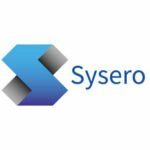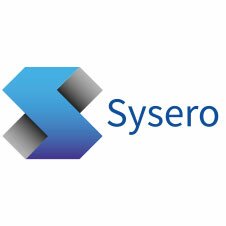Sysero: 4 low-code workflows for improved legal operations
An increasing number of law firms and legal providers are turning to low-code platforms to automate tasks and build digital workflows. These intuitive technology solutions use visual interfaces with basic logic and drag-and-drop functionality to enable lawyers and staff to quickly and easily build workflows, without any need for coding. By embracing low-code solutions, law firms eliminate the need for costly software purchases and overcome the coding challenges that previously plagued custom legal technology.
In the past, legal professionals have had to master the intricacies of custom-built technology and learn how to finesse the system to work in the most optimal way for them. Lawyers and staff were limited by clunky systems that required the assistance of IT professionals to change and adapt to new ways of working.
However, the arrival of low-code technology has made it possible for lawyers and staff with absolutely no knowledge of coding to create automated processes to meet their unique and ever-evolving needs. As a simple example, a low-code platform would enable a lawyer to quickly create a custom web-based form to capture specific information from a client to be used as part of a workflow. By empowering lawyers to quickly and easily build custom workflows on the fly, low-code platforms deliver greater agility, productivity, and client service.
The Need for Low-Code Solutions in Legal
The adoption of low-code software has skyrocketed in recent years. As law firms and legal providers strive to become technology-driven market leaders and attract tech-savvy clients, low-code solutions allow them to overcome two main challenges simultaneously: the need for greater agility and a growing digital skills shortage.
Today’s organisational leaders face greater pressure to accelerate digital transformation and increase value and delivery speed to clients. So, it’s no surprise that the demand for low-code solutions is on the rise, with Gartner predicting that low-code application development will account for more than 65% of application development activity across all sizes of companies by 2023.
Low-code solutions enable non-technical users to create applications quickly by leveraging visual design tools and a drag-and-drop interface. With these features, lawyers can easily create workflows by mapping out a flowchart, rather than writing line after line of code.
Types of Low-Code Workflows For Improved Legal Operations
While there’s no doubt that low-code platforms can power greater efficiency and flexibility, not all low-code platforms are the same. Depending on the intended purpose, there are a variety of ways you can use low-code platforms to create custom workflows. Here is a look at some of the main types of low-code workflows for law firms and legal teams.
Form Designers
Low-code form builders provide a convenient, easy-to-use way to capture critical client information for use in a variety of workflows. Using a low-code forms designer like Sysero’s Digital Forms Designer, lawyers and non-technical staff can quickly build custom online questionnaires to collect information to be used in client intake, document production, contract negotiations, and more.
Using Digital Forms Designer, lawyers can create branded dashboard-type interfaces for their clients, which guide them through an online questionnaire to capture information to start a new transaction, collect compliance information or provide access to legal documents.
Document Production
Low-code platforms can also be used to automate the document production process and quickly build document bundles or packs on a regular basis. Using a visual designer, users can create a flowchart to map out a document production workflow to easily generate documents (or sets of documents) using information captured via an online form. Decisions and actions within the workflow can be dragged and dropped onto the design canvas using a Visual Workflow Builder, simplifying the end-to-end automation process.
Client Intake & Acceptance
Another use case for low-code workflows in the legal space is client intake and acceptance. Low-code tools like Sysero can be used to build innovative digital onboarding solutions, which use online forms to capture client information and automatically check it against various public registers and information databases.
By streamlining the client intake and acceptance process and making it digital, law firms can improve quality by automating once-manual activities and approvals, ensure compliance, and get to work faster for their clients.
Business Process
Nearly any process that’s central to legal operations can be automated and streamlined using low-code solutions. From knowledge management and compliance to contract negotiations and client portals, a low-code platform like Sysero can provide an easy, intuitive, and visual way to quickly build custom applications. By combining forms, workflows, and integrations with other systems, such as iManage, Sysero’s low-code business process management tools are ideal for speeding up processes, driving productivity, and ensuring alignment and compliance across the entire process.
Why Use Sysero for Low-Code Development?
When it comes to low-code solutions for Legal, Sysero offers a comprehensive, completely customisable solution that can accommodate a wide-range of business use cases. Sysero’s Visual Workflow Designer makes it easier for non-technical users to build on-demand applications that make use of automated workflows and optimise processes to boost productivity and client service.
Sysero’s unique low-code solution also enables firms to bring their business-critical workflows to the hybrid cloud. With Sysero’s Hybrid Cloud Workflows, firms can start their workflows by capturing critical data via the public cloud, and then transfer sensitive data to the firm’s private cloud for storage.
To learn more about how Sysero’s low-code solutions can benefit your firm, please get in touch with our team.



